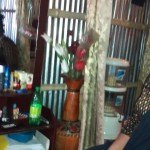After our meeting with Boys of Bangladesh, we understand more about being gay in Bangladesh, and it is also clear you will not find people who call themselves ‘dragqueen’ openly here. We do want to work on this subject, and are looking for contacts in the Hijra community in Dhaka. Hijra’s are people who don’t fit in the male or female definition of society. In India and Bangladesh they are perceived as transgenders, a ‘real’ Hijra being castrated and using hormones for female body development. Our experience is that anyone not fitting in the male – female concept can be a hijra. They are physically male, and look and act like women.
In Bangladesh society there is no place for them among the non-hijra people in society. They live together in communities, mostly living from azaar tola (collecting money from the market place) and badhia (blessing a new born child through dancing and singing). Since these sources of income are getting scarcer, more hijras became sex workers. When they get sick, or grow older, their vulnerability gets more pressing, since there is little health care available for them, and an older hijra cannot be a sexworker, or working on the streets collecting money for a long time.
Looking to meet them in their own home, and portraying them, we went with Samsul Alam Helal to one of the places they live, in the old centre of Dhaka. After arriving at smaller sandy roads, from the main full-of-traffic roads, we see shacks, little houses, chicken, goats and dogs walking around. We drive as far as we can, and then leave the car to walk further, into small alleyways. We are close to a lake, and the shacks here are made of steel boards and wood, all supported by wooden pools.
After waiting there, and talking to some of the people that pass by, we learn that most of the hijra’s have gone out. This period of the Ramadan is an important time to go out to all the shops and collect money, so they are almost all day out. They will be working this much until EID, the festival that closes the Ramadan period on the 30th and 31st of july. Luckily for us, one hijra, Parvati has decided to stay home today, and she welcomes us in her house.
We tell her about the projects we are doing, and show her pictures from dragqueens we portrayed around the world. Her English is good, so there is no need for translation. She tells us she is 39 years old now, and has been living in this hijra community for 7 years. On the wall is a picture of her, 5 years back in beautiful clothes. She explains that her hijra sisters are all out, and will be everyday until after EID. She will talk with the hijra-guru, the eldest of the community, and arrange a day on which everybody is there. We will come back at the 1st of august and meet them all.




